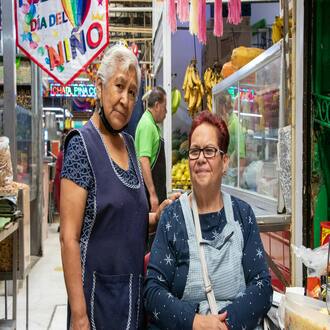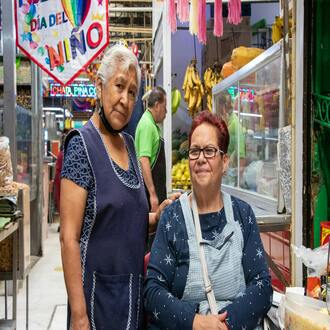Transcription Preventing childhood obesity
Adverse food reactions are any clinically abnormal response to ingestion, contact or inhalation of a food or food additive. Adverse reactions to food ingestion cause very similar symptoms, however the causes can be very different.
For the identification and study of these conditions, they are divided into two main groups:
- Toxic reactions.
- Non-toxic reactions.
Toxic reactions occur when food containing viruses, bacteria, parasites or toxins is ingested. Toxic reactions depend on the food; therefore, they affect all individuals when the dose of the toxin contained in any food exceeds certain limits. An example of a toxic reaction is salmonellosis.
Non-toxic reactions only occur in a small number of individuals who show a certain degree of susceptibility to a certain element contained in the food. Non-toxic reactions can be divided into food allergy and food intolerance.
Toxic reactions due to food consumption
Toxic reactions or food poisoning are caused by the ingestion of beverages or foods containing toxic compounds. The main toxic compounds contained in food can be classified into two main groups:
- Natural toxins present in foods in their natural form or generated by contamination, spoilage or poor storage.
- Contamination of food with infectious microorganisms -viruses, bacteria, and parasites- and chemical agents.
Most common natural toxins in food
Potato glycoalkaloids: These toxins are found in the sprouts - potato eyes - and in their green areas. To avoid glycoalkaloid poisoning, store potatoes in a dark, ventilated place and remove the sprouts and green parts of the potatoes before cooking.
Mycotoxins produced by molds: These toxins can grow in a wide variety of foods - grains, fruits, nuts, dried fruits, etcetera. Mycotoxins have short- and long-term effects on health since they cause acute intoxication after ingestion and, if ingested frequently over a long period of time, have carcinogenic effects.
To avoid the negative effects of mycotoxins, do not eat food with mold; even if the moldy part of the food is removed, the rest may contain mycotoxins.
Lectins contained in peas, lentils, beans, soybeans and other legumes: they cause toxic reactions - stomach pains, vomiting, etc. - when these legumes are eaten raw or undercooked.
Neurotoxins contained in star anise: The Scientific Committee of the Spanish Agency for Consumer Affairs, Food Safety and Nutrition (AECOSAN) advises against the use of star anise as an infusion or as a dietary supplement for children, since an overdose of star anise can cause health disorders in children, as it contains two toxic substances: veranisatins and anethole.
In addition, a large number of children under three months of age have suffered neurological symptoms -irritability, spasmodic and rapid eye movements, digestive disturbances, etc.- after consuming common star anise mixed with a very similar highly toxic species: Japanese star anise.
Marine biotoxins contained in mollusks: Mollusks may contain several types of toxins -amnesic, paralytic and lipophilic- which are not inactivated by cooking, salting, drying or smoking. To avoid marine biotoxin poisoning, shellfish caught directly from the shore should not be consumed without being analyzed.
Foods that may contain marine biotoxins are: oysters, mussels, cockles, clams, clams, scallops, sea urchins, periwinkles and periwinkles.
Toxins in fish: There are two main toxins present in fish: anisakis and seguiratera:
- Anisakis is a parasite found in fish and can enter the human organism when raw or insufficiently cooked fish is consumed, and can cause an anaphylactic reaction, potentially fatal.
- Ciguatera is an intoxication caused by consuming fish contaminated by toxins produced by microalgae. These microalgae are ingested by small fish, which constitute the food of larger species, until they reach a person who consumes a contaminated fish. Ciguatera is not inactivated by cooking, salting, drying or smoking fish; the only way to avoid it is not to consume the contaminated fish.
The effects of ciguatera can be very serious; its symptoms appear between 30 minutes and 24 hours after ingestion of the fish, manifesting gastrointestinal and neurological disorders - skin itching, vomiting, diarrhea; abdominal, muscular, joint and dental pain; fatigue, weakness, incoordination of movements; numbness of feet, hands and lips; and in severe cases, circulatory collapse.
The most affected species are: swordfish, billfish, abad, silverside, grouper, wahoo and amberjack.
Infectious microorganisms -viruses, bacteria, parasites- most commonly present in foods
- Salmonella: It is a bacterium that can exist in raw and undercooked eggs and in foods containing them -mayonnaise, tiramisu, etc.-; causing salmonellosis in humans who eat them, an infection that affects the gastrointestinal tract and can cause dehydration, bacteremia or reactive arthritis. During pregnancy, salmonellosis can be transmitted to the baby and cause much more serious complications.
- Listeria monocytogenes: This is a bacterium that can appear in raw milk or cheeses made from it, raw or undercooked meats and sausages. The consumption of these foods can cause listeriosis; an infrequent disease, but which causes the death of 30% of the people who suffer from it. Pregnant women can transmit it to the fetus through the placenta or during childbirth.
- Toxoplasma gondii: It is an intracellular parasite transmitted by the consumption of raw or undercooked meat, and water or food contaminated with cat feces. This parasite causes toxoplasmosis, a parasitic disease that can cause mild and asymptomatic infections in adults; however, when pregnant women are infected, the parasites pass to the fetus causing fatal infections.
child obesity




